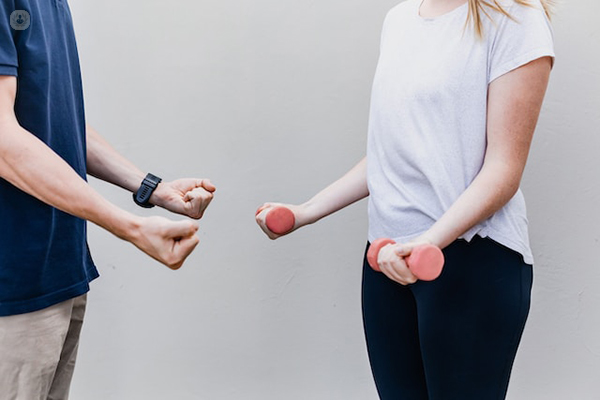Orthopaedic rehabilitation
What is orthopaedic rehabilitation?
Orthopaedic rehabilitation is a specialised branch of medicine focused on the comprehensive care and recovery of injuries or conditions related to the musculoskeletal system. It involves a multi-disciplinary approach, integrating physiotherapy and osteopathy with exercise, pain management, and patient education to optimise healing, mobility and function. The main goal of orthopaedic rehabilitation is to help patients regain independence and resume their daily activities.

When is orthopaedic rehabilitation required?
Orthopaedic rehabilitation is needed following musculoskeletal injuries, surgeries, or chronic conditions affecting the bones, joints, ligaments, tendons, or muscles. It aims to restore function, reduce pain, and enhance mobility.
Common reasons people require orthopaedic rehabilitation include fractures, joint replacement surgeries, ligament tears, and conditions like osteoarthritis or rheumatoid arthritis.
What are the key components of orthopaedic rehabilitation?
A key element of orthopaedic rehabilitation is the creation of personalised treatment plans for each patient, which may include physical therapy sessions aimed at improving strength, flexibility, and mobility.
In addition, occupational therapy assists in regaining skills for daily activities. Pain management techniques, such as medication or modalities like heat/cold therapy, are another key component of orthopaedic rehabilitation. Additionally, educating patients on self-care, injury prevention, and lifestyle modifications plays a significant role in successful recovery.
How is orthopaedic rehabilitation tailored to individual patients?
Each patient's treatment plan is customised based on their specific condition, needs, and goals. Factors such as age, overall health, severity of injury, and lifestyle are considered. Rehabilitation specialists, including physiotherapists and osteopaths, design a programme that progresses as the patient improves, setting out a gradual return to normal function.
What role does exercise play in orthopaedic rehabilitation?
Exercise is fundamental in orthopaedic rehabilitation. It helps in improving strength, flexibility, and range of motion. Specialised exercises are tailored to target affected areas, aiding in recovery and preventing further injury. These exercises are usually supervised by a physiotherapist and are adjusted as the patient progresses.
What is the expected outcome of orthopaedic rehabilitation?
The primary goal is to restore optimal function and quality of life for the patient. Successful rehabilitation leads to reduced pain, improved mobility, increased independence in daily activities, and a decreased risk of further injury or deterioration of the musculoskeletal condition. Ultimately, the aim is to enable patients to get back to their usual activities and lifestyle.


